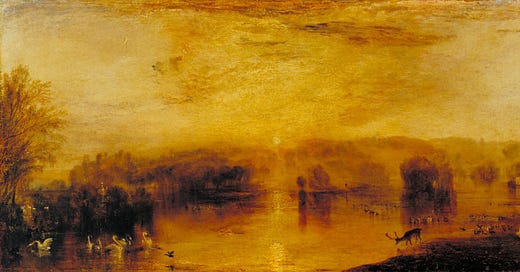Fieldnotes in Environmental Communication
My weekly fieldnotes: on the environmental history of Galapagos tortoises, communicating wildlife endangerment with interactive docs and critter-cams, environmental justice in Hawai‘i, and more.
Hi everyone, welcome back to Wild Ones, a bi-weekly digest by me, Gavin Lamb, about news, ideas, research, and tips in environmental communication. If you’re new, welcome! You can read more about why I started Wild Ones here. Sign up here to get these digests in your inbox:
What I’m reading
On the Backs of Tortoises: Darwin, the Galapagos, and the Fate of an Evolutionary Eden by Elizabeth Hennessy, an Associate Professor of History and Environmental Studies at the University of Wisconsin, Madison.
Here’s a review of the book by science writer David Quammen:
“On the Backs of Tortoises is the best history of the Galápagos archipelago that I’ve ever read, but it’s also something more argumentative: a postmodern critique of certain prevailing myths about the Galápagos Islands and what Hennessy posits to be the guiding (but misguided) principles of conservation biology, as applied to those islands and elsewhere throughout the world.”
I just started reading On the Backs of Tortoises, but what alerted me to the book was a great interview with the author on the Edge Effects podcast (a podcast I highly recommend produced by graduate students in environmental studies also at the University of Wisconsin Madison).
What I’m listening to
Root Cause Remedies, a new podcast about environmental justice in Hawai‘i. This episode features an interview with Kyle Kajihiro about the history of environmental justice and politics in Hawai‘i. Kyle teaches at the University of Hawai‘i at Mānoa in the Geography and Ethnic Studies Departments and has a Ph.D in Geography. In this interview, he shares his experience and encyclopedic knowledge of environmental politics and the environmental justice movement in Hawai‘i.
Much of my thinking about environmental communication, and how it can help us better address the monumental environmental issues of our time, comes from my perspective living and researching in Hawai‘i. So if you follow Wild Ones, you’ll probably be hearing a bit more from me about communication efforts to promote climate action, sustainability, environmental justice, conservation, and much more, that are taking shape here on O‘ahu and the other Hawaiian islands:)
What I’m watching
Bear 71 by Leanne Allison and Jeremy Mendes, a documentary made in 2012. This is an interactive documentary about Bear 71, the “story of a female grizzly bear monitored by wildlife conservation officers from 2001–2009” in Banff National Park.
One of my motivations for writing this digest is to find and share innovative approaches to communicate more compelling and effective stories about environmental issues, and this documentary struck a chord with me. I first heard about it from an article published in the journal Environmental Humanities. In that article, the author Katey Castellano (an Associate Professor of English at James Madison University), writes about two strategies the film employs to more effectively communicate the ‘data-driven discourse of wildlife management’:
The documentary brings focus to the story of an individual bear, rather than focusing on the species in aggregate.
By using an interactive visual strategy where the user can navigate around a grid of the park helps people visualize wildlife endangerment, not as a problem just for the species, but as an important thread within the larger fabric of the park ecosystem.
On a side note, this analysis reminded me of a great interview with science writer Ed Yong about his approach to communicating stories of wildlife conservation. As Yong puts it, the main question we should ask ourselves as environmental writers (and communicators more generally) is this: “How do you get a reader to give a shit? And specifically: In a news ecosystem that is increasingly filled with tales of woe and doom for our own species let alone all the others, how do you get a reader to give a shit about a random group of 400-ish animals?” Read his suggestions for strategies here, in a great discussion about his article on whale conservation with the Open Notebook.
Quote I’m thinking about
“All zoology is really ecology. We cannot fully understand the lives of animals without understanding our microbes and our symbioses with them.”
― Ed Yong, in I Contain Multitudes






